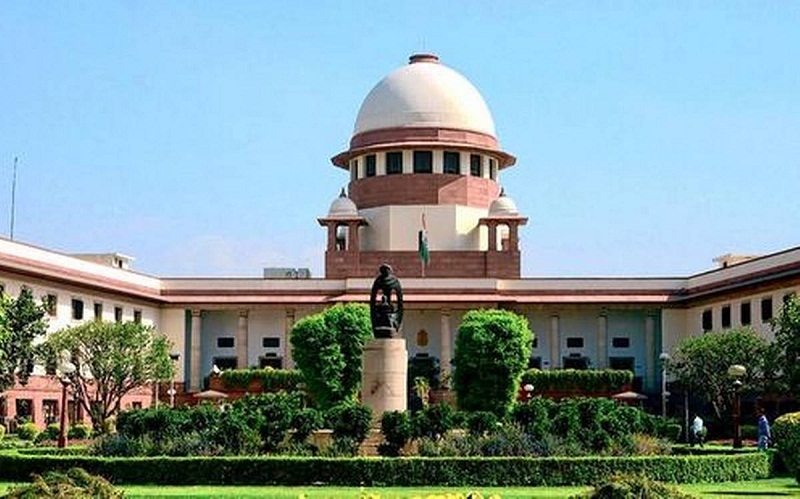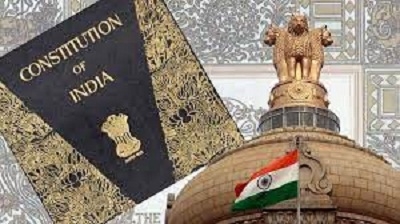Redrawing strategy necessary in search of our basic structure - II

The court held that the newly introduced Clause 4&5 were actually inserted to bar the courts to entertain any challenge on the question of validity of the constitutional amendments. The court beautifully described the importance of Judicial Review in the following words…..Our Constitution is founded on a nice balance of power among the three wings of the state namely the Legislature, the Executive & the Judiciary. It is the function of the Judges nay their duty to pronounce upon the validity of laws. The court held Section 55 of the amendment act 1976 void since it firstly made challenge in court impossible &secondly it removes all the restrictions on the power of Parliament under Article 368. The court rightly interpreted the true object of these new clauses which was to throw away the limitations imposed by Kesavananda on Parliament.
The newly added clause 5 has the effect of even repealing the entire constitution and change it into a totalitarian constitution as per the political exigencies of the ruling political party & still it won’t be a ground for a challenge in the court because of the combined reading of Clause 4&5 of 42nd Amendment. Depriving the courts their power of judicial review is making Fundamental Rights a box of rhetoric dreams as they would never be granted and rights without remedies.
The court relying on Kesavananda opined that the power to amend under Art. 368 is not a power to destroy. In the above said decision the court clearly mentioned the scope of amendment under Article 368. The court answered about the extent of the word “Amendment”. The court found that the word “amend” in the provision of Article 368 stands for a restrictive connotation and could not ascribe to a fundamental change. To understand it simply; the parliament in order to pass a constitutionally valid amendment, the particular amendment is subject to the application of Basic Structure test and has to pass it.
The court also explained the relationship between the provisions of Part III & Part IV of the Constitution. The court said that the entire Indian Constitution rests upon the foundation of Part III & Part IV. To give absolute primacy to one over another will be shaking the foundation of the Constitution. Striking a harmonious balance between the provisions of Part III & Part IV is where justice lies and making one part subservient to another would only lead to chaos. The provisions of Part IV must be achieved but without abrogation of FR’s and anything which shakes this balance violates the essential balance of the Constitution. Therefore, the court in strict terms laid down that the balance between DPSP’s & FR’s is Basic Structure of the Constitution.
As regards to Section 4 of the amendment act 1976 which tried to separate Article 14 and 19 from Article 31 C this was held void as it destroyed the basic feature. The articles mentioned under Article 14 and 19 are essential elementary articles n modern democracies. Most of the recent laws are passed to satisfy the obligations of DPSP because of which Art. 14 & 19 have stood withdrawn. These rights are clearly without any doubt universal because of their presence in Universal Declaration of Human Rights. Therefore, restoring the judgment of Kesavananda on the point of Art. 31 C the court struck down Section 4 of the amendment act 1976.
Bhagwati J. agreed with the majority in striking down Section 55 of the amendment act since it made judicial review of the amendments impossible. In his view this exclusion of judicial review is indirectly enlarging the scope of Parliament’s amending capacity. Regarding Clause 5 he wrote that it cannot remove any doubt which did not existed. However, the amendment in Article 31 C was held valid by him because he was of the opinion that the court should not on first hand hold any law made under it unconstitutional. In his opinion the courts should look into the pith of the law by following Doctrine of Pith& Substance. If the law is substantially connected to the provisions mentioned under DPSP’s then it would be a constitutional law and on the contrary if there is no nexus between the law and the DPSP’s it would be surely struck down. Therefore, the court by 4:1 majority held sections 4 & 55 of the 42nd Constitutional (Amendment) Act, 1976 unconstitutional. (Source: Courtesy an Article by Hemant Varshney, August 28, 2018) .
 Importance of the basic structure: This judgment was another decision where the apex court applied the doctrine of Basic Structure laid down in Kesavananda Bharti. The judgment unanimously struck down 42nd Amendment to the extent of striking down Section 55 of the Amendment act 1976. The importance of the judgment lies in the way it grants finality to the debate that was going on since 1951. The judgment finally rests the debate on the point of limitation on parliament’s power in amending the constitution when it held that the parliament cannot amend basic structure of the constitution. Parliament since the Golaknath decision is indulging in proving its supremacy over other institutions as well as over democracy itself in one way or another; direct or indirect. After successive defeats in Golakanath, Kesavananda Bharti & Indira Nehru Gandhi the parliament desperately amended the Constitution and inserted a direct law claiming that there can be no limitation on Parliament’s power of amendment as well as there can be no challenge in courts of law on the amendments. This regressive and draconian law was passed by parliament in order to prove its supremacy.
Importance of the basic structure: This judgment was another decision where the apex court applied the doctrine of Basic Structure laid down in Kesavananda Bharti. The judgment unanimously struck down 42nd Amendment to the extent of striking down Section 55 of the Amendment act 1976. The importance of the judgment lies in the way it grants finality to the debate that was going on since 1951. The judgment finally rests the debate on the point of limitation on parliament’s power in amending the constitution when it held that the parliament cannot amend basic structure of the constitution. Parliament since the Golaknath decision is indulging in proving its supremacy over other institutions as well as over democracy itself in one way or another; direct or indirect. After successive defeats in Golakanath, Kesavananda Bharti & Indira Nehru Gandhi the parliament desperately amended the Constitution and inserted a direct law claiming that there can be no limitation on Parliament’s power of amendment as well as there can be no challenge in courts of law on the amendments. This regressive and draconian law was passed by parliament in order to prove its supremacy.
The court was called upon to decide the constitutionality of such draconian law. The court without giving any other vague interpretations or fearing the mighty government upheld the epic Kesavananda decision. The court gave a unanimous decision that such amendment which restricts the challenge of amendments in the courts of law and which removes all restriction on the power of parliament are void and in violation of Basic structure of the Constitution. The court held that Judicial Review is something that they cannot take away eve with making law.
The court also explained the relationship between the provisions of Part III and Part IV and held that in process of achieving Part IV provisions there shall be no abrogation of Fundamental Rights. The court justifies this proposition on the basis that the foundation of constitution is the harmonious relation between Fundamental Rights & Directive Principles of the State Policy. Striking a harmonious balance between the provisions of Part III & Part IV is where justice lies and making one part subservient to another would only lead to chaos. The provisions of Part IV must be achieved but without abrogation of FR’s and anything which shakes this balance violates the essential balance of the Constitution. Therefore, the court in strict terms laid down that the balance between DPSP’s & FR’s is Basic Structure of the Constitution. The court also reiterated Kesavananda’s ruling that the power of Parliament to amend the constitution under Art. 368 is of restrictive nature. The court relied on the description of Basic Structure by Hegde & Mukherjeajj. That, only circumstantial features can be changed and basic features cannot be changed. (Source: Edited by Chiranjeeb Prateek Mohanty).
What is the basic structure of the Constitution of India? Dr. P. M. Bakshi in the 14th edition of his commentary on the “Constitution of India” has enumerated the basic structure of the Constitution of India as following :
1. Supremacy of the Constitution. 2. Republican and democratic form of government. 3. Secular character of the Constitution. 4. Separation of powers between the legislature, executive and the judiciary. 5. Federal character of the Constitution.
The original Constitution drafted by the Drafting Committee (under the Chairmanship of Dr. B. R. Ambedkar) did not contain the third intruding feature.
What is the basic structure of India and the society?
Voters have to ponder over this third “intruder”. The question remains whether ‘there is any basic structure of India’ if yes, what is the basic structure of India as an ancient nation and its ancient culture and the ancient society. India is in a crisis of its own ancient identity. Citizens of India have to find out this constitutional discrepancy. (Concluded)